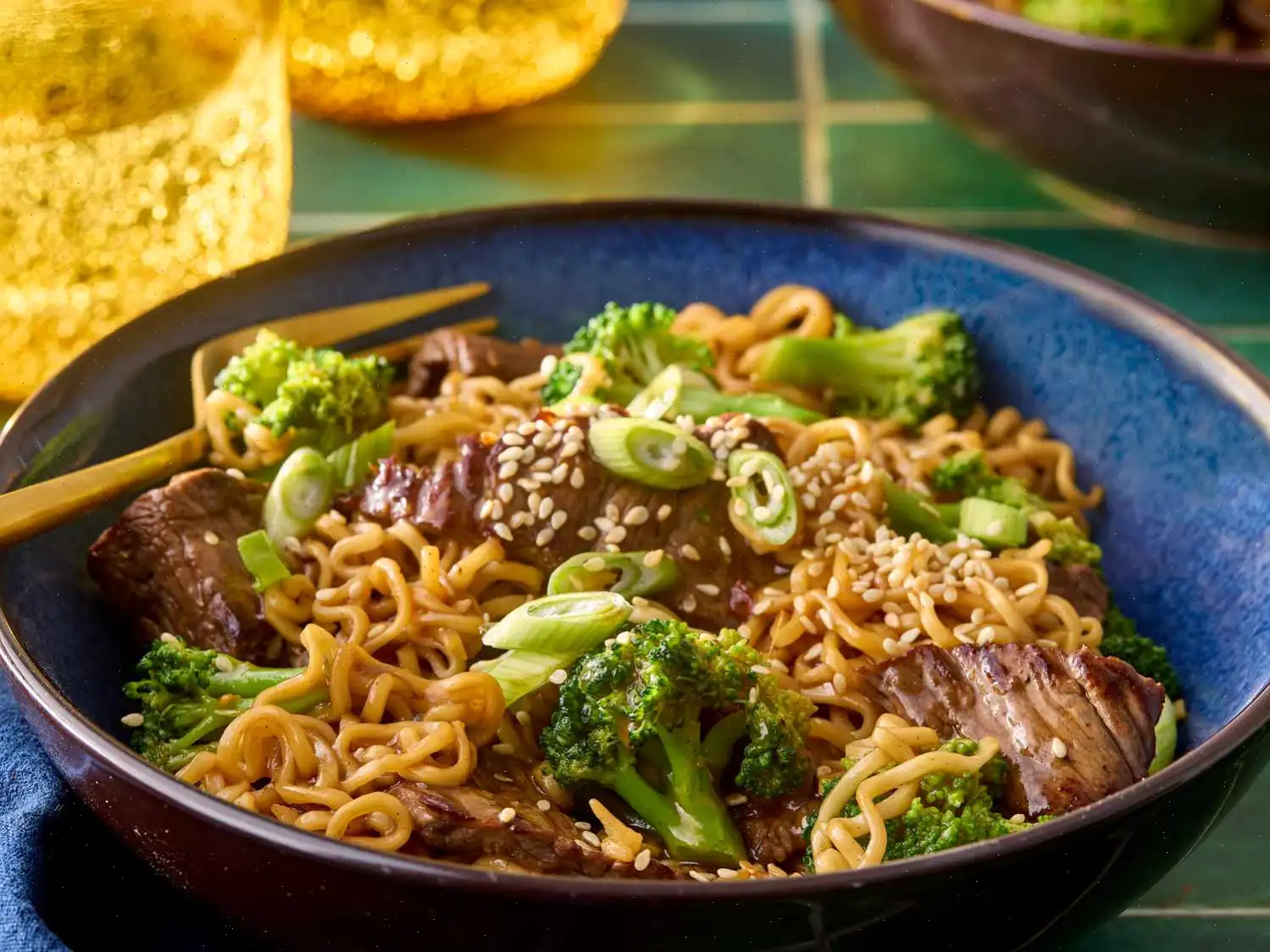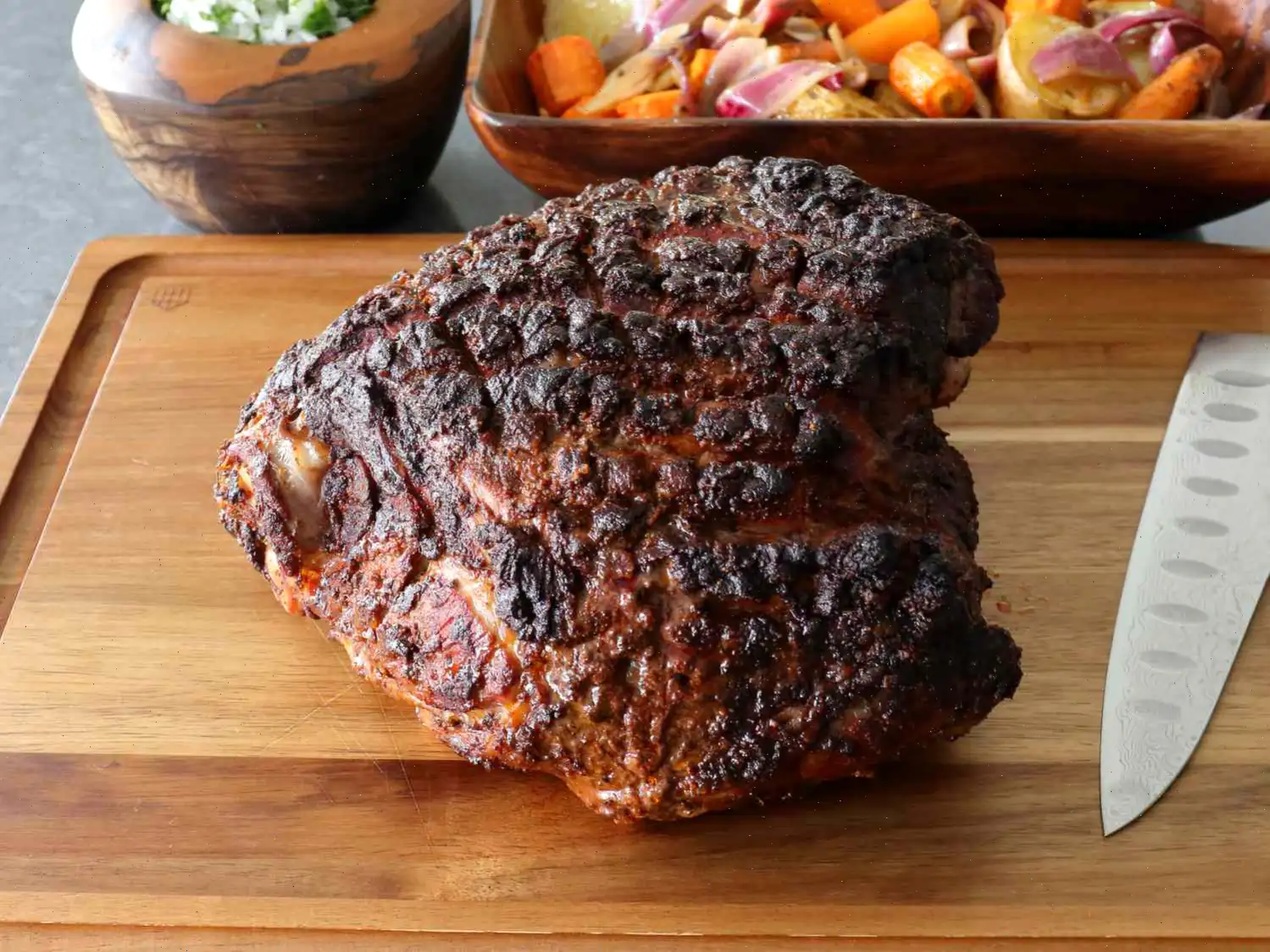
Kate's Easy German Sauerbraten Recipe
Ingredients
- 2 cups water
- 1 cup red wine
- 1 cup cider vinegar
- 1/2 large onion, diced
- 1 lemon, sliced
- 2 tablespoons white sugar
- 2 tablespoons salt
- 1 clove garlic, diced
- 10 whole cloves
- 2 bay leaves
- 1 tablespoon juniper berries, crushed (optional)
- 1 teaspoon whole peppercorns
- 1 (4-pound) boneless beef chuck roast
- 2 cups chopped onions
- 2 cups chopped carrots
- 1 cup diced celery
- 8 gingersnap cookies, crushed
Directions
- In a saucepan, combine water, red wine, cider vinegar, 1/2 of the diced onion, lemon slices, sugar, salt, garlic, whole cloves, bay leaves, juniper berries, and peppercorns. Heat over medium heat for about 5 minutes, or until the sugar dissolves. Remove from heat and let the marinade cool.
- Once cooled, pour the marinade into a resealable plastic bag. Add the beef chuck roast to the bag and toss to evenly coat. Squeeze out the excess air, seal the bag, and refrigerate. Marinate for 2 to 3 days, turning the roast twice a day to ensure even marination.
- After marinating, place 2 cups of onions, carrots, and celery into a slow cooker. Remove the roast from the marinade and place it on top of the vegetables.
- Strain the marinade and pour 2 1/2 cups of it over the roast. Reserve the remaining marinade for later use.
- Cover the slow cooker and cook the roast on Low for 8 hours. Once done, turn off the slow cooker and transfer the roast to a cutting board. Cover it with aluminum foil and allow it to rest.
- Strain the cooking liquid into a large bowl. Return the vegetables to the slow cooker and set aside.
- Pour 3 cups of the cooking liquid (adding reserved marinade as needed to reach 3 cups) into a saucepan. Add the crushed gingersnap cookies. Heat over medium-high heat for about 10 minutes, or until the gravy thickens to your desired consistency.
- Slice the roast and serve with the vegetables and thickened gravy.
Nutrition Facts (per serving)
| Nutrition | Amount | % Daily Value |
|---|---|---|
| Calories | 460 | |
| Total Fat | 27g | 35% |
| Saturated Fat | 11g | 53% |
| Cholesterol | 103mg | 34% |
| Sodium | 1875mg | 82% |
| Total Carbohydrate | 18g | 7% |
| Dietary Fiber | 3g | 11% |
| Total Sugars | 10g | |
| Protein | 28g | 56% |
| Vitamin C | 6mg | 7% |
| Calcium | 59mg | 5% |
| Iron | 4mg | 22% |
| Potassium | 512mg | 11% |
Note: Percent Daily Values are based on a 2,000-calorie diet. Your daily values may be higher or lower depending on your calorie needs. If you are following a medically restrictive diet, please consult your doctor or a registered dietitian before preparing this recipe for personal consumption.

This delicious and easy-to-make German Sauerbraten recipe is a flavorful dish that captures the essence of traditional German cuisine. It is made by marinating a beef chuck roast in a mixture of vinegar, wine, and spices before slow-cooking it to perfection. The dish is typically served with a rich gravy made from the marinade, often accompanied by vegetables like carrots, onions, and potatoes.
Origin and History of Sauerbraten
Sauerbraten, which translates to "sour roast" in German, has been a staple of German cuisine for centuries. The dish is believed to have originated in the regions of Germany where beef was plentiful, particularly in the areas of Rhineland, Bavaria, and Franconia. The marinating process used in Sauerbraten was a practical method of tenderizing tougher cuts of meat, especially in times when refrigeration was not available. The vinegar-based marinade helped to preserve the meat, and over time, it evolved into a flavorful dish enjoyed by many. Traditionally, Sauerbraten was made with beef, but variations using pork, lamb, or even horse meat have also been common in some regions.
Regional Variations
Regional differences in Sauerbraten exist throughout Germany and even beyond its borders. For example, in the Rhineland, the dish is often cooked with a bit of sugar to balance the acidity of the vinegar, while in the Franconia region, it may be served with a darker, richer gravy. Some regions prefer to serve Sauerbraten with boiled potatoes, while others may pair it with red cabbage or potato dumplings (Kloesse). The use of juniper berries in the marinade is also more common in some areas, providing an aromatic twist to the dish. In the southern parts of Germany, you might even find variations that include the addition of wine and spices like cloves, which help enhance the flavor of the roast.
How It Differs from Similar Dishes
Sauerbraten is often compared to other slow-cooked meats like pot roast, but the key difference lies in the distinctive sour, vinegary flavor that sets it apart. While pot roast is typically cooked with a mild broth or gravy, Sauerbraten gets its unique taste from the marinating process that infuses the meat with acidity from vinegar and wine. The inclusion of aromatic spices like cloves, bay leaves, and juniper berries adds complexity to the dish, creating a taste profile thats both tangy and savory. Another notable difference is the use of gingersnap cookies to thicken the gravy, which is not commonly seen in other roast dishes.
Where Sauerbraten is Traditionally Served
Sauerbraten is a popular dish in German households, especially for special occasions such as holidays, family gatherings, and festivals like Oktoberfest. It is often served at traditional German restaurants and is a common feature on menus offering authentic German fare. In Germany, Sauerbraten is frequently accompanied by side dishes like potato dumplings, sptzle (a type of egg noodle), red cabbage, and sauerkraut. Outside of Germany, you can find variations of Sauerbraten in places with a large German or European immigrant population, including the United States, where it is particularly popular in regions with a rich German heritage like Pennsylvania and Wisconsin.
Interesting Facts About Sauerbraten
1. Traditionally, Sauerbraten was made with horse meat, although beef is the most common variety today. Some regions in Germany still prepare the dish with horse meat, which is said to have a unique tenderness and flavor.
2. The marinating process for Sauerbraten can last anywhere from 2 to 5 days. The longer the meat marinates, the more tender and flavorful it becomes. In some families, its a tradition to marinate the meat for several days to achieve the perfect balance of sourness and depth of flavor.
3. Sauerbraten is often made in large batches because it is perfect for feeding a crowd. Its a popular dish for German family dinners, especially when entertaining guests or celebrating a holiday.
4. The dish has been adapted in many countries and is sometimes made in a slow cooker, as shown in this recipe. The slow cooking method is ideal for ensuring the meat becomes tender and fully absorbs the flavors of the marinade.
5. The combination of sour, sweet, and savory flavors makes Sauerbraten a unique dish that appeals to a wide variety of palates. The use of ingredients like juniper berries and gingersnaps may seem unusual at first, but they play a crucial role in developing the dish's signature taste.
You can listen to this recipe in AI audio format. Simply click the play button below to listen to the content in a format that suits you best. It’s a great way to absorb information on the go!
FAQ about Kate's Easy German Sauerbraten Recipe
Comments
Timothy Martinez
03/31/2023 01:34:00 PM
This recipe reminds me so much of my father's secret recipe that he never shared with anyone, taking it to his grave. I'm looking forward to trying it out myself. What sets this recipe apart are the essential ingredients of lemon and gingersnaps which I haven't seen in other recipes, especially for thickening the gravy. The only tweak I'll make is searing the roast before slow-cooking it as I believe it enhances the flavor. I plan to pair it with red cabbage, potato pancakes, and my grandma's Apfel Kuchen recipe. :)
Michelle Phillips
12/26/2022 10:28:29 PM
Sure! Here is a revised version of the review: "If you're craving authentic German Sauerbraten, look no further than this recipe! The taste surpasses that of the local Bavarian restaurant, owned by individuals hailing from Bayern, Deutschland. The flavor is truly outstanding! Make sure to choose your gingersnaps wisely as they can significantly alter the gravy's taste and are crucial to the dish's success. The inclusion of Juniper Berries is also essential for an authentic flavor. It's important to remember that regional dishes can vary in preparation, so judge this recipe on its own merits of flavor, texture, and preparation complexity rather than comparing it to others you've tried. For a complete German culinary experience, pair it with Rotkohl (red cabbage) and Apfelkuchen (Apple cake) for dessert. For the adventurous, consider adding Deutsche Kartoffelsalat (German Potato Salad), Currywurst, Rouladen (Beef Rolls), and Authentic German Beer (Prost!) for an unforgettable culinary journey (perfect for Oktoberfest). Please note, this recipe is for a slow cooker, so it may not have the same appearance as oven-roasted meat."
Jose Phillips
12/06/2024 11:22:11 AM
I enhanced the gravy with a tablespoon of sugar and four additional ginger snaps. The meat turned out tender and absolutely delicious!
Ryan Thompson
11/22/2024 08:30:26 AM
FINALLY, I found an easy and delicious way to recreate the Sour Beef & Dumplings that I grew up with. This dish holds a special place in my heart as my family and I used to enjoy it every Christmas. I recently discovered that my grandmother had been taking a shortcut by ordering it from Silver Spring Mining Company Restaurant. However, I wanted to make it from scratch this year without cheating. I followed Boss Lady Debbie's Easy Potato Dumplings recipe and it turned out PERFECT. I did make a slight adjustment by adding a touch of red wine vinegar and cornstarch to the sauce to suit my personal taste, but it was so much simpler than other recipes I found online. I even marinated the beef for 6 days, and it was worth it.
George Lee
08/24/2024 12:38:20 PM
Tried this recipe today and it was absolutely delicious! I marinated a beef sirloin roast for 2.5 days and it turned out incredibly tender and flavorful. I paired it with buttered red potatoes and roasted butternut squash (followed the recipe on Allrecipes). Definitely a winner - will be making it again for sure!








